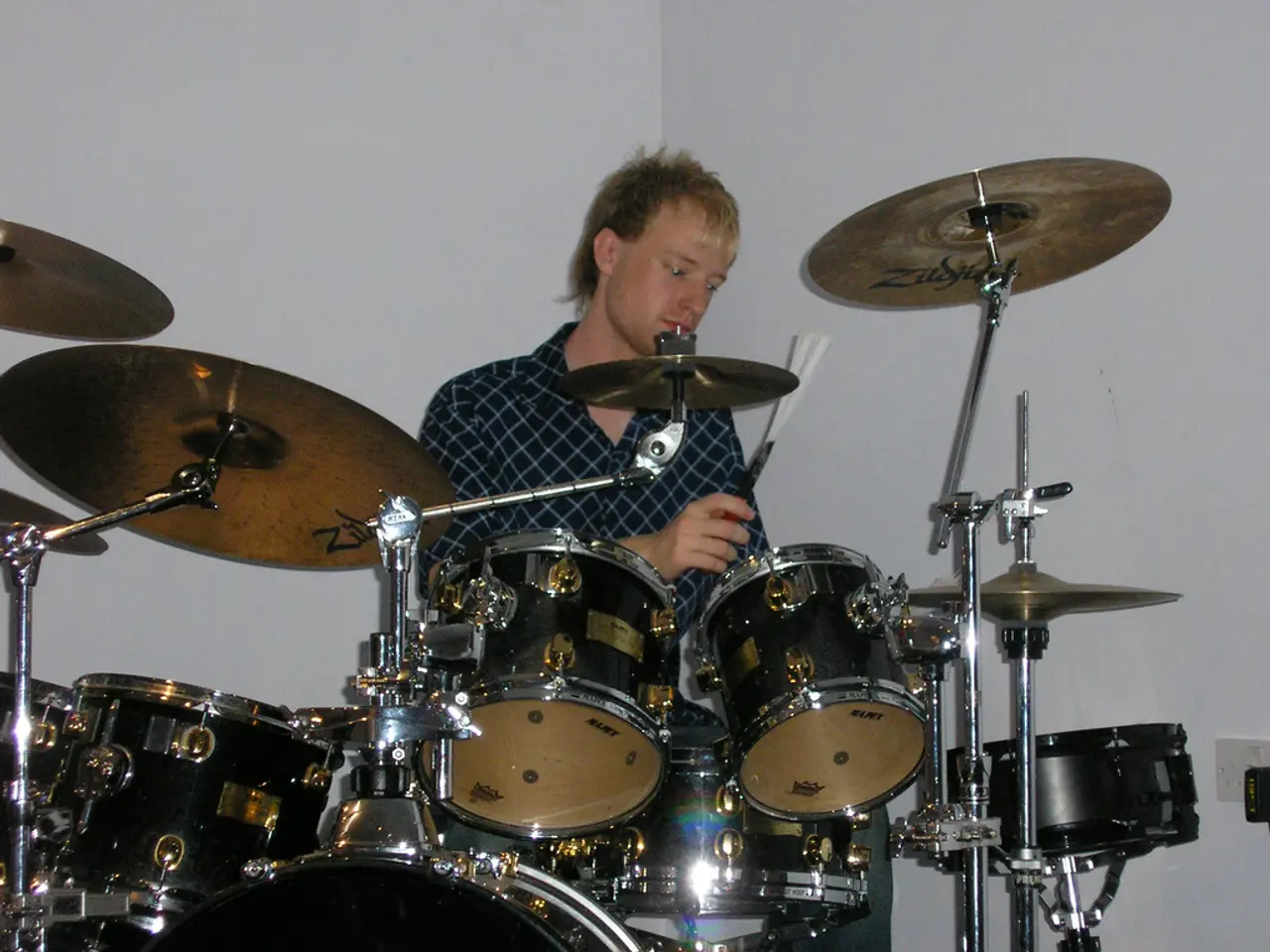Techniques for Pummeling Electronic Percussion with Boom
In the realm of electronic music, crafting a powerful and cohesive drum mix is essential for any producer. By employing a range of techniques, you can achieve clarity, separation, punch, and control across various genres, from house and techno to EDM.
EQ Techniques
Start by shaping the kick drum, boosting attack frequencies in the high-mid range to ensure it cuts through the mix while enhancing the low-end presence after compression for consistent weight. Use EQ carving on individual elements to avoid frequency masking, ensuring each sound occupies its own space in the spectrum. For transient-heavy genres like house or EDM, controlling transient frequencies in the midrange and high frequencies can prevent clutter.
Compression and Dynamic Control
Use compression to even out dynamics for a more consistent and controlled drum sound without losing natural feel. VCA compressors are ideal for drums due to their transparency and fast response, and parallel compression can boost energy without squashing dynamics. Compress kick or snare after initial EQ to stabilize their dynamic range, then add additional EQ boosts on consistent frequencies like low end post-compression.
Transient Shaping
Transient shaping tools allow you to emphasize or soften attacks to add punch or smoothness, critical in electronic genres known for tight rhythm and groove. Analyze transient overlaps and reduce frequency clashes to maintain rhythmic clarity and separation in busy mixes.
Panning and Stereo Placement
Place foundational low-frequency elements like kick and bass centered to anchor the mix. Pan rhythmic percussion and synths to widen the stereo field for separation and depth. Always check the mix in mono to maintain clarity and impact.
Bus Processing and Subgroups
Route drum elements to subgroups for cohesive processing like bus compression and EQ adjustments that glue the drums together while controlling overall levels and tone.
Sample Selection and Arrangement
Choose samples with complementary frequency content and transient characteristics to reduce masking and ensure each element is clearly identifiable.
By combining these techniques—starting with a balanced static mix, applying subtle but purposeful EQ and compression, managing transients carefully, and thoughtfully placing elements in the stereo field—you can achieve clear, punchy, and controlled electronic drum mixes suited for various genres.
Remember, the snare or clap provides the backbeat and adds impact to the groove, usually sitting in the midrange. Using phase inversion or slight timing adjustments helps match volume levels between layers that may be cancelling each other out or sounding thin. A light amount of bus compression on the drum bus can help unify drums and add subtle control, using a low ratio (around 2:1), a slow attack, and a medium release.
Genre-specific drum tones are important to choose for a natural fit with the energy and style of the track. Use compression on individual drum sounds like kicks and snares, and apply parallel compression for extra energy. Clean, well-produced samples are recommended for better results in the final mix. Avoid overlayering, as it can lead to phase issues and a cluttered mix.
Adjusting the envelope (attack, decay, sustain, release) of each drum sound allows for shortening tails, smoothing out harsh transients, aligning layered sounds, and shaping grooves. Extra percussion like toms, shakers, and synthetic hits can add groove and variation. Fix issues at the source, such as replacing poorly recorded or unbalanced drum sounds.
The kick drum is the anchor of most electronic tracks, driving the rhythm and filling out the low end. Sync delay times to your track's tempo for rhythmic cohesion, and automating the delay feedback or wet/dry mix can add variation throughout the track. Trusting your ears is essential when making decisions that serve the groove and emotion of the track.
In electronic music, drums are the foundation of a track, providing drive, energy, and a professional edge. Gating or sidechain compression can control reverb or delay tails that interfere with the groove. Clean up unwanted frequencies, shape the kick, sculpt the snare or clap, separate the hats, and use subtractive EQ for a clean, well-EQ'd drum mix.
Short, tight reverbs are used for subtle room feel, while longer plates are used for a more dramatic effect, always shaped with EQ and removing low frequencies below 200 Hz and taming highs above 10 kHz. Compression helps control dynamics and add punch to drum sounds, but should be used carefully to avoid flattening the drums and removing their natural groove. Hi-hats add pace, rhythm, and brightness, typically living in the upper mids and high frequencies.
Choosing the right drum sounds from the start makes mixing easier and helps the track sound more polished. Layering and shaping drum sounds gives more control over tone, timing, and energy, adding depth and character without overcrowding the mix. Equalisation is used to create space and definition in the drum mix, with the goal of carving out space so each element can be heard clearly.
[1] [Source 1] [2] [Source 2] [3] [Source 3] [4] [Source 4]
- Incorporating gadgets such as transient shaping tools and compressors into your mix can help you achieve clear, punchy, and controlled electronic drum mixes — a vital aspect of data-and-cloud-computing in music production.
- Advancements in technology have led to the development of various EQ techniques, bus processing, and sample selection methods, ensuring the aforementioned mixes suit various genres, from house and techno to EDM, thereby revolutionizing the world of music production.




